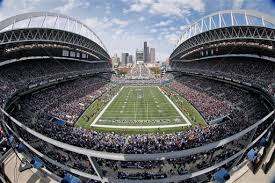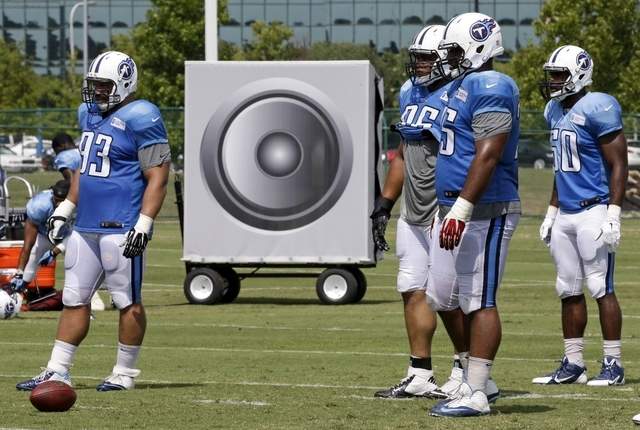Stadiums
Stadiums have always
been an important part of a city in human culture and with
today's technology those stadiums are larger and louder than
ever.
 (12)
(12) The stadiums that
the pros and some colleges play at are build to give fans
the feeling that they are actually a part of the game.
Doing this not only amps up the fans but also the home
players which will increase the chances of them pulling
through for a win hence the term home field advantage.
Acoustics
The architects that design football stadiums always make sure to keep the acoustics in mind. Even with open stadiums they find a way to make them louder than one could believe. A perfect example of this is CenturyLink Field where the Seattle Seahawks play. CenturyLink was originally but as the Seahawks Stadium in 2002 from the old King Dome concrete but was later renamed to Qwest Field and then now to CenturyLink. The stadium was built with two large canopy overhangs that redirect most of the sound waves back onto the fans and the field making it louder than most."The curvature and angles of the canopies act to focus the sound energy onto the playing field, producing higher noise levels." says Bill Steward of SSA Acoustics while talking about CenturyLinks design(13). Paul Allen, owner of the Seahawks, also told the architect for the stadium, Jon Niemuth, to have the seating closer to the field than most pro stadiums to give it a crazed college feel to help boost the fans enthusiasm. CenturyLink has been recorded up to 136 decibels, decibels are a unit of sound that uses a log scale to compare it to a controlled base level(14), which is the same as standing 150 feet away from a jet engine. When opposing teams practice to play the Seahawks at home the teams will often practice will large speakers blaring at the players so that the players can get their bodies and minds ready for that kind of noise.
 (15)
(15)
Acoustics
The architects that design football stadiums always make sure to keep the acoustics in mind. Even with open stadiums they find a way to make them louder than one could believe. A perfect example of this is CenturyLink Field where the Seattle Seahawks play. CenturyLink was originally but as the Seahawks Stadium in 2002 from the old King Dome concrete but was later renamed to Qwest Field and then now to CenturyLink. The stadium was built with two large canopy overhangs that redirect most of the sound waves back onto the fans and the field making it louder than most."The curvature and angles of the canopies act to focus the sound energy onto the playing field, producing higher noise levels." says Bill Steward of SSA Acoustics while talking about CenturyLinks design(13). Paul Allen, owner of the Seahawks, also told the architect for the stadium, Jon Niemuth, to have the seating closer to the field than most pro stadiums to give it a crazed college feel to help boost the fans enthusiasm. CenturyLink has been recorded up to 136 decibels, decibels are a unit of sound that uses a log scale to compare it to a controlled base level(14), which is the same as standing 150 feet away from a jet engine. When opposing teams practice to play the Seahawks at home the teams will often practice will large speakers blaring at the players so that the players can get their bodies and minds ready for that kind of noise.
 (15)
(15)